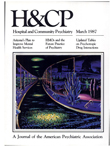Pathways and Cycles of Runaways: A Model for Understanding Repetitive Runaway Behavior
Abstract
Based on information provided by 149 runaways staying in a Canadian shelter, the authors developed a model that explains repetitious running away as the result of youths' cognitive confusion and unrealistic beliefs. The majority of the youths, who had run away an average of 8.9 times, felt that the events that led them to run away were unpredictable, yet 54 percent blamed only themselves for what happened. The paper describes the pathways, cycles, and outcomes of running away; analyzes the relationship between the youths' experiences with prostitution, delinquency, and sexual and physical abuse and the length of time they had been away from home; summarizes the youths' reasons for running away; compares the beliefs of runaways with and without a history of sexual abuse; and discusses interventions.
Access content
To read the fulltext, please use one of the options below to sign in or purchase access.- Personal login
- Institutional Login
- Sign in via OpenAthens
- Register for access
-
Please login/register if you wish to pair your device and check access availability.
Not a subscriber?
PsychiatryOnline subscription options offer access to the DSM-5 library, books, journals, CME, and patient resources. This all-in-one virtual library provides psychiatrists and mental health professionals with key resources for diagnosis, treatment, research, and professional development.
Need more help? PsychiatryOnline Customer Service may be reached by emailing [email protected] or by calling 800-368-5777 (in the U.S.) or 703-907-7322 (outside the U.S.).



